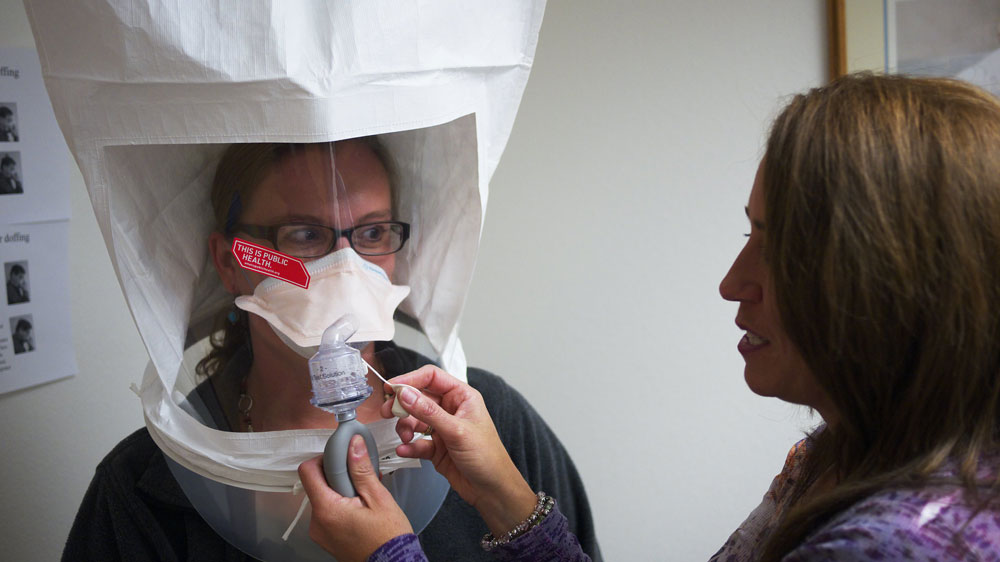
November 15, 2020; Wall Street Journal
According to analysis by the Associated Press (AP), new cases among residents of nursing homes in COVID-19 “surge states” rose 300 percent from late May to late October, from 1,083 to 4,274, and deaths in those facilities rose by 100 percent.
This is unconscionable. Back in May, NPQ wrote about the failure of nursing homes to protect patients or staff. And yet the pattern repeats itself. As the AP reports:
Weekly cases among nursing home staff in surge states more than quadrupled, from 855 the week ending May 31, to 4,050 the week ending October 25. That rings alarms because infected staffers not yet showing symptoms are seen as the most likely way the virus gets into facilities. When those unwitting staffers test positive, they are sidelined from caring for residents, raising pressures on remaining staff.
The states selected for the study were Alaska, Arkansas, Iowa, Idaho, Indiana, Kansas, Kentucky, Minnesota, Missouri, Montana, Nebraska, New Mexico, North Dakota, Ohio, Oklahoma, South Dakota, Utah, Wisconsin, West Virginia, and Wyoming. In Minnesota, where the pandemic is raging full force, nursing homes are in an enormous human capital crisis:
In a matter of hours in early October, Paul Gaebe’s Friday went from normal to one of dire emergency. A resident at Mother of Mercy assisted living facility in Albany, had COVID-19.
“We had several staff that had contact with that individual,” Gaebe said. “And suddenly we went from normal staffing to short staffing within less than a day.”
Then a handful of high school students who also worked as care attendants at the home quit. Gaebe says they worried they wouldn’t be able to attend school if they were working with patients who had COVID-19.
Sign up for our free newsletters
Subscribe to NPQ's newsletters to have our top stories delivered directly to your inbox.
By signing up, you agree to our privacy policy and terms of use, and to receive messages from NPQ and our partners.
“In a matter of about 24 hours, we lost 16 employees.”
Luckily, in this case, the state of Minnesota had enough foresight to establish a pool of staffers drawn from health care and hospitality. Mother of Mercy found fill-in staff there, but elsewhere, homes have also had to supplement nursing care staff with National Guard members.
There’s a large body of research to indicate that nonprofit nursing homes provide a better quality of care for a lesser cost, even during normal times. This quality of care is linked to higher staffing ratios. A recent study, unsurprisingly then, has found a differential in death rates to date between nonprofit and for-profit nursing homes.
Whether nonprofit or for-profit, long-term care facilities, primarily nursing homes, are once again the epicenter of the pandemic, even as the number of those affected and dying spreads at record rates. North Dakota and South Dakota are particularly hard hit, along with other largely rural states like Montana and Wisconsin, where provisions for handling the crisis may be particularly complicated due to staff shortages.
An analysis done by the Wall Street Journal, using data from the Centers for Medicare and Medicaid Services shows that rural counties reported 18 percent of nursing-home COVID-19 deaths in the week ending November 1st even though they house only 10 percent of the overall population. This is a massive shift from earlier in the year, where nursing homes in big city areas were seeing the lion’s share of infections and deaths. The Journal reports what this latest spread means in human terms:
Northern Montana Care Center in Havre didn’t have a single case of COVID-19 through the spring and summer, even as the virus devastated facilities on both coasts. But after COVID-19 began spreading in the region, the nursing home saw its first positive test in late September. Eventually, the outbreak spread to 35 of the facility’s 68 residents, killing 16.
“The more isolated the community, the harder it is to bring in workforce,” said Shawnda Schroeder, a research associate professor focused on rural health at the University of North Dakota.
Other challenges rural nursing homes face, researchers say, include smaller buildings that make it hard to isolate infected residents. Rural nursing homes also sometimes lack easy access to a hospital or doctor, following closures of many rural hospitals in recent years.—Ruth McCambridge













